Concerto
di Margherita
The ensemble Concerto di Margherita focuses on
the revival of the historical practice of singing
while accompanying oneself on an instrument,
in a vibrant and dynamic collective gesture,
where five voices fuse with five instruments
to create a unique sound.
"Concerto di Margherita are a most accomplished,
The Yorkshire Times
York Early Music Festival Review
the revival of the historical practice of singing
while accompanying oneself on an instrument,
in a vibrant and dynamic collective gesture,
where five voices fuse with five instruments
to create a unique sound.
"Concerto di Margherita are a most accomplished,
talented group of musicians who perform
with great sensitivity, a lovely blending of voices
and totally convincing acting through song."
The Yorkshire Times
York Early Music Festival Review
Il gioco della cieca
New Album releases by Arcana, Outhere Music
New Album releases by Arcana, Outhere Music
The ensemble Concerto di Margherita focuses on the historical practice of selfaccompanied singing: all five musicians sing and accompany themselves on theorbo, viol, baroque guitar, harp and lute. Thus, the sound of five voices and five instruments melt into one musical gesture, creating a dynamic and exciting soundscape.
Francesca Benetti, Giovanna Baviera, Tanja Vogrin, Ricardo Leitão Pedro and Rui Stähelin met during their studies at the Schola Cantorum Basiliensis in Switzerland and founded the ensemble in 2014.
The ensemblesʼ main repertoire is Italian vocal and instrumental music of the late 16th century, with a focus on the works written for the self-accompanying musicians of the court of Ferrara.
Francesca Benetti, Giovanna Baviera, Tanja Vogrin, Ricardo Leitão Pedro and Rui Stähelin met during their studies at the Schola Cantorum Basiliensis in Switzerland and founded the ensemble in 2014.
The ensemblesʼ main repertoire is Italian vocal and instrumental music of the late 16th century, with a focus on the works written for the self-accompanying musicians of the court of Ferrara.
Concerto di Margherita has been invited to perform in venues all around Europe including historical sites such as Palazzo Schifanoia in Ferrara and Villa “I Tatti” in Florence, as well as prestigious festivals such as Trigonale (Austria), Sastamala (Finland), Festtage der Alte Musik (Switzerland), Monteverdi Festival (Italy), Musica Antica (Netherlands) and York’s Early Music Festival (England).
The ensemble was supported by the EEEmerging programme for European ensembles from 2016 to 2019, having been one of the two finalists selected to complete all three years of residencies.
The ensemble was supported by the EEEmerging programme for European ensembles from 2016 to 2019, having been one of the two finalists selected to complete all three years of residencies.
Das Ensemble Concerto di Margherita konzentriert sich auf die historische Aufführungspraxis des selbstbegleiteten Gesangs: Alle fünf Musiker singen und begleiten sich auf Theorbe, Viola da Gamba, Barockgitarre, Harfe und Laute. Der Klang von fünf Stimmen und fünf Instrumenten verschmilzt so zu einer musikalischen Geste und erzeugt eine dynamische und aufregende Klanglandschaft.
Francesca Benetti, Giovanna Baviera, Tanja Vogrin, Ricardo Leitão Pedro und Rui Stähelin lernten sich während ihres Studiums an der Schola Cantorum Basiliensis in der Schweiz kennen und gründeten das Ensemble in 2014.
Das Hauptrepertoire des Ensembles ist die italienische Vokal- und Instrumentalmusik des späten 16. Jahrhunderts, wobei der Schwerpunkt auf den Werken liegt, die für die selbstbegleitenden Musiker des Hofes von Ferrara geschrieben wurden.
Francesca Benetti, Giovanna Baviera, Tanja Vogrin, Ricardo Leitão Pedro und Rui Stähelin lernten sich während ihres Studiums an der Schola Cantorum Basiliensis in der Schweiz kennen und gründeten das Ensemble in 2014.
Das Hauptrepertoire des Ensembles ist die italienische Vokal- und Instrumentalmusik des späten 16. Jahrhunderts, wobei der Schwerpunkt auf den Werken liegt, die für die selbstbegleitenden Musiker des Hofes von Ferrara geschrieben wurden.
Concerto di Margherita wurde eingeladen, an Orten in ganz Europa aufzutreten, einschließlich historischer Stätten wie dem Palazzo Schifanoia in Ferrara und der Villa „I Tatti“ in Florenz, sowie bei prestigeträchtigen Festivals wie Trigonale (Österreich), Sastamala (Finnland), Festtage der Alten Musik (Schweiz), Monteverdi Festival (Italien), Musica Antica (Niederlande), Festival Ambronay (Frankreich) und Yorks Early Music Festival (England).
Das Ensemble wurde vom EEEmerging-Programm für europäische Ensembles von 2016 bis 2019 unterstützt, nachdem es als einer der beiden Finalisten für alle drei Jahre des Unterstützungsprogramms ausgewählt worden war.
Das Ensemble wurde vom EEEmerging-Programm für europäische Ensembles von 2016 bis 2019 unterstützt, nachdem es als einer der beiden Finalisten für alle drei Jahre des Unterstützungsprogramms ausgewählt worden war.
Far rivivere la pratica storica del cantare accompagnandosi con il proprio strumento in un vibrante gesto collettivo.
L'idea che anima questo Ensemble: cinque voci si fondono alle armonie di cinque strumenti, per un suono dal colore unico. L'Ensemble Concerto di Margherita nasce a Basilea nel 2014 dall'incontro di Francesca Benetti, Tanja Vogrin, Giovanna Baviera, Rui Staehelin e Ricardo Leitao Pedro nel periodo del loro studio presso la Schola Cantorum Basiliensis.
Il repertorio su cui l'ensemble focalizza la propria ricerca è quello madrigalistico italiano di fine '500, con particolare attenzione ai compositori che furono attivi alla corte estense di Ferrara come Giaches de Wert o Ludovico Agostini.
Una particolare attenzione va alle composizioni dedicate al Concerto delle Donne a Ferrara come i madrigali a uno, due, tre soprani di Luzzasco Luzzaschi in cui viene esaltata la vocalità femminile dell' Ensemble.
I momenti vocali si equilibrano con una parte esclusivamente strumentale in cui si può godere di Canzoni del primo barocco italiano, tra cui, ad esempio, quelle di Girolamo Frescobaldi.
Nella primavera 2015, il Concerto di Margherita debutta con una Tournè tutta italiana che vede il gruppo esibirsi da subito in luoghi storici di grande prestigio quali Palazzo Schifanoia a Ferrara, la Fondazione Tagliavini di Bologna e Villa i Tatti (centro di ricerca sul rinascimento italiano dell'Università di Harvard) a Firenze. Il lavoro di questo Ensemble e la sua costante ricerca di un equilibrio espressivo tra voci e strumenti è proiettato verso un futuro di sperimentazione e analisi del repertorio madrigalistico italiano a cavallo tra i due secoli.
L'ensemble Concerto di Margherita se consacre à la pratique historique du chant auto-accompagné: les cinq chanteurs chantent et s'accompagnent sur le théorbe, la viole, la guitare baroque, la harpe et le luth. Ainsi, le son de cinq voix et cinq instruments se fondent en un seul geste musical, créant un paysage sonore dynamique et passionnant. Francesca Benetti, Giovanna Baviera, Tanja Vogrin, Ricardo Leitao Pedro et Rui Staehelin se sont rencontrés pendant leurs études à la Schola Cantorum Basiliensis en Suisse et ont fondé l'ensemble en 2014. Le répertoire principal des ensembles est la musique vocale et instrumentale italienne de la fin du 16éme siècle, en mettant l'accent sur les oeuvres écrites pour les musiciens de la cour de Ferrare.
Concerto di Margherita a été invité à se produire dans des lieux de toute l'Europe, y compris des sites historiques tels que Palazzo Schifanoia à Ferrare et Villa "I Tatti" à Florence, aussi que dans des festivals prestigieux comme
Trigonale (Autriche), Sastamala (Finland), Festtage der Alte Musik (Suisse), Monteverdi Festival (Italie), Musica Antica (Pays-Bas) et le festival de musique ancienne de York York (Angleterre).
L’ensemble a été soutenu par le EEEmerging programme pour des ensembles européens de 2016 à 2019, étant un des finalistes à être selectionné pour completer les trois années de résidences.
L’ensemble a été soutenu par le EEEmerging programme pour des ensembles européens de 2016 à 2019, étant un des finalistes à être selectionné pour completer les trois années de résidences.
Giovanna Baviera
Voice
Viola da Gamba
Voice
Viola da Gamba
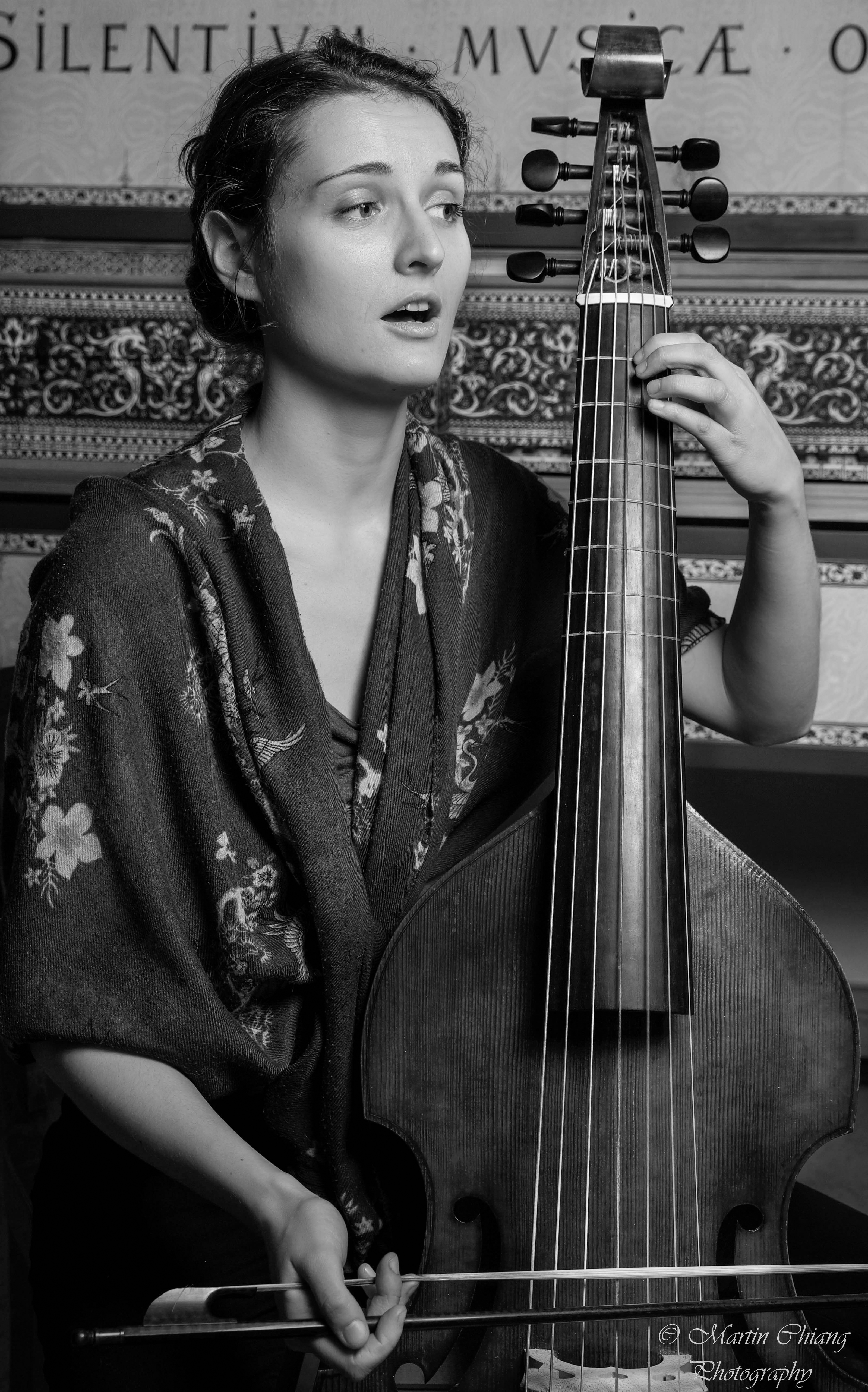
After obtaining a Master’s degree with honours in Music and Philosophy at Trinity College Dublin, Ireland, Giovanna Baviera moved to Basel to study Viola da gamba with Paolo Pandolfo, where she graduated with a Master’s degree in 2016. While in Basel she also pursued studies in singing (with Kathleen Dineen and Ralf Ernst) and choral conducting (Raphael Immoos).
Giovanna accompanies herself on the viol and is a founding member of Concerto di Margherita. She has a busy schedule as a chamber musician with several ensembles across Europe (Profeti della Quinta, Daedalus, Novantik) and has performed in a variety of festivals and venues across Switzerland and Europe (Théâtre Vidy Lausanne, Gessnerallee Zürich, Poznan Baroque Festival, Harvard Institute for Renaissance Italian Studies Florence, among others).
Francesca Benetti
Voice
Lute
Theorbo
Baroque Guitar
Voice
Lute
Theorbo
Baroque Guitar
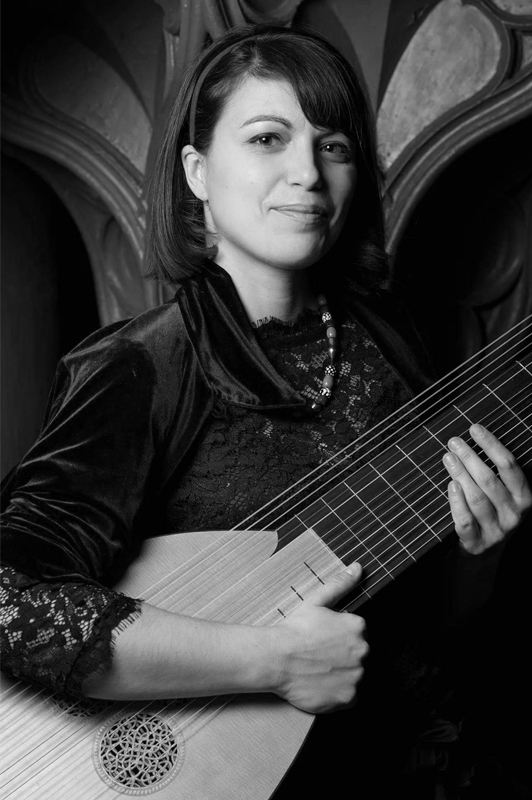
Francesca is a guitarist and theorbist originally from Trento, Italy. She studied classical guitar at the Music Conservatory in Venice with Florindo Baldissera and at the Hochschule der Künste Bern with Elena Cásoli with a focus on contemporary music.
She pursued her interest in theorbo and early music at the Schola Cantorum Basiliensis, where she graduated in 2014 under the tutelage of Peter Croton.
She has performed as a soloist and as a chamber musician with various ensembles and in several festivals across
She pursued her interest in theorbo and early music at the Schola Cantorum Basiliensis, where she graduated in 2014 under the tutelage of Peter Croton.
She has performed as a soloist and as a chamber musician with various ensembles and in several festivals across
Europe, notably in Venice (Art Night Festival/World Venice Forum 2009), Trento
(Castello del Buonconsiglio),Ravenna(Workshop-Ensemble Accademia Bizantina), Firenze (Harvard Institute for Renaissance Italian Studies), Lubljiana (Days of Early Music), Kassel (Stadttheater), among others.
She has built her experience as an orchestral continuo-player under notable conductors such as René Jacobs and Rinaldo Alessandrini.
She is co-founder of the ensemble Gitarreria and Concerto di Margherita.
(Castello del Buonconsiglio),Ravenna(Workshop-Ensemble Accademia Bizantina), Firenze (Harvard Institute for Renaissance Italian Studies), Lubljiana (Days of Early Music), Kassel (Stadttheater), among others.
She has built her experience as an orchestral continuo-player under notable conductors such as René Jacobs and Rinaldo Alessandrini.
She is co-founder of the ensemble Gitarreria and Concerto di Margherita.
Ricardo Leitão Pedro
Voice
Lute
Theorbo
Baroque Guitar
Voice
Lute
Theorbo
Baroque Guitar
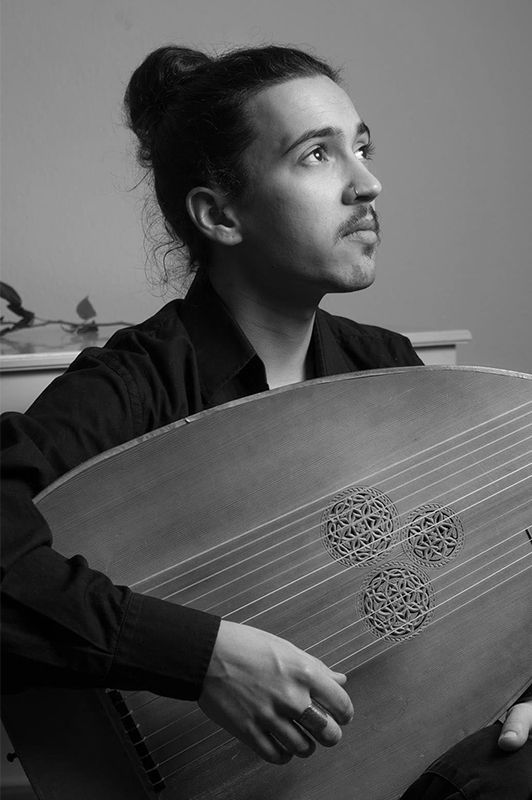
Ricardo has been fascinated by singer-instrumentalists from Antiquity to modern times for a long time. He is one of the few performers today to revive the early practice of cantor al liuto, accompanying himself on different plucked string instruments (medieval-renaissance lute, theorbo, baroque guitar).
Born in Porto in 1990, he first picked up the lute at eighteen-years old inspired by a concert of Hespérion XXI and encouraged by his classical guitar teacher Pedro Fesch.
A year later he’s accepted for a bachelor degree in early music at ESMAE (Porto), during which he was granted an Erasmus scholarship to study with lutenist Eugène Ferré during his last year of teaching at the Conservatoire National Supérieur de Musique et Danse de Lyon. With concerts given in Switzerland, Portugal, Spain, France, Italy, Slovenia and England, he’s regularly invited to perform with different ensembles (Troxalida, La Boz Galana, Cappela Sanctae Crucis) and is a member
Born in Porto in 1990, he first picked up the lute at eighteen-years old inspired by a concert of Hespérion XXI and encouraged by his classical guitar teacher Pedro Fesch.
A year later he’s accepted for a bachelor degree in early music at ESMAE (Porto), during which he was granted an Erasmus scholarship to study with lutenist Eugène Ferré during his last year of teaching at the Conservatoire National Supérieur de Musique et Danse de Lyon. With concerts given in Switzerland, Portugal, Spain, France, Italy, Slovenia and England, he’s regularly invited to perform with different ensembles (Troxalida, La Boz Galana, Cappela Sanctae Crucis) and is a member
of “I Discordanti” (selection EEEmerging 2016) and Concerto di Margherita (selection EEEmerging 2017 & 2018).
His lute duo with Guilherme Barroso was awarded 2nd prize (1st non-attributed) at the JIMA competition (Portugal) for chamber music.
Along the years, Ricardo has also had the opportunity to learn from singers such as Gerd Türk, Ulrich Messthaler Patrizia Bovi and Kathleen Dineen and lutenists Paul O’Dette, Eduardo Egüez, Hopkinson Smith and Rolf Lislevand.
He’s currently based in Basel, where he’s concluding a master degree at the renowned Schola Cantorum Basiliensis in medieval and renaissance singing with Dominique Vellard and lute with Crawford Young and Marc Lewon, with a special focus on historical improvisation techniques.
His lute duo with Guilherme Barroso was awarded 2nd prize (1st non-attributed) at the JIMA competition (Portugal) for chamber music.
Along the years, Ricardo has also had the opportunity to learn from singers such as Gerd Türk, Ulrich Messthaler Patrizia Bovi and Kathleen Dineen and lutenists Paul O’Dette, Eduardo Egüez, Hopkinson Smith and Rolf Lislevand.
He’s currently based in Basel, where he’s concluding a master degree at the renowned Schola Cantorum Basiliensis in medieval and renaissance singing with Dominique Vellard and lute with Crawford Young and Marc Lewon, with a special focus on historical improvisation techniques.
Rui Stähelin
Voice
Lute
Theorbo
Baroque Guitar
Voice
Lute
Theorbo
Baroque Guitar
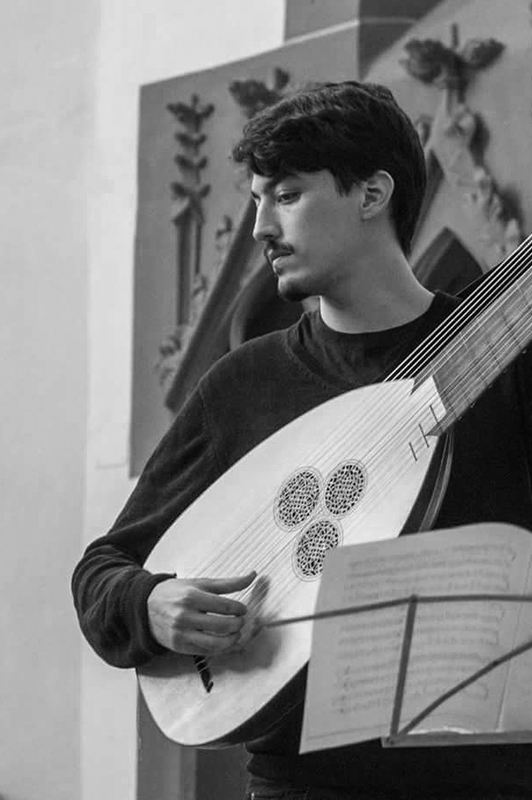
Rui is born in Basel and studied lute with Hopkinson Smith at the Schola Cantorum Basiliensis.
He discovered the instrument early on in life, winning first prize in the Swiss Youth Music Competition in 2009.
He perfected his skills as a lutenist in masterclasses with Paul O’Dette, Evangelina Mascardi und Paul Beier.
He is a member of Concerto di Margherita and accompanies himself on the lute.
He discovered the instrument early on in life, winning first prize in the Swiss Youth Music Competition in 2009.
He perfected his skills as a lutenist in masterclasses with Paul O’Dette, Evangelina Mascardi und Paul Beier.
He is a member of Concerto di Margherita and accompanies himself on the lute.
He is in demand as a self-accompanying chamber musician with ensembles such as Les Bergers and Novantik. He has performed in Switzerland, the Netherlands, France and Italy.
He is particularly interested in historical improvisation practices on lute and theorbo, which he pursues both as a soloist and as a chamber musician.
He is particularly interested in historical improvisation practices on lute and theorbo, which he pursues both as a soloist and as a chamber musician.
Tanja Vogrin
Voice
Baroque Harp
Voice
Baroque Harp
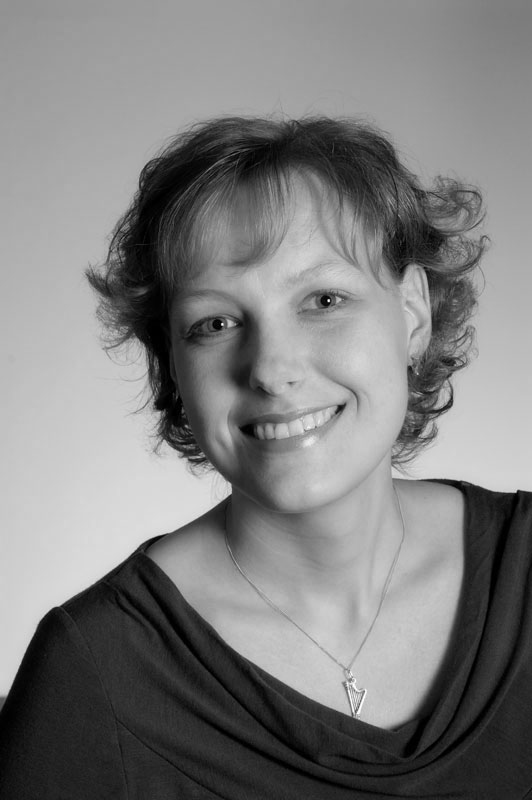
Tanja is a Slovenian-born Mezzosoprano and Harpist who studied singing with Dušanka Simonovic, Jolanda Korat, Annemarie Zeller and Joanna Borowska-Isser, and harp with Dalibor Bernatovic, Eva Hoffellner, Arcola Clark and Ágnes Polónyi in Slovenia and Austria. She graduated from the Universität für Musik und darstellende Kunst Graz with honours in 2009.
Her interest in early music led her to the Schola Cantorum Basiliensis, where she studied historical harps with Heidrun Rosenzweig, ensemble singing with Anthony Rooley and Evelyn Tubb and medieval singing with Kathleen Dineen.
Her interest in early music led her to the Schola Cantorum Basiliensis, where she studied historical harps with Heidrun Rosenzweig, ensemble singing with Anthony Rooley and Evelyn Tubb and medieval singing with Kathleen Dineen.
Tanja accompanies herself on the harp and is one of the founding members of Concerto di Margherita.
She has a busy schedule both as a soloist and with several ensembles (Novantik, Alerion, Neue Hofkapelle Graz, Recreation Barock, La Cetra Basel, Cortesia, Austrian Baroque Connection, Musica Cubicularis).
She teaches baroque singing at the J. J. Fux- Konservatorium in Graz since April 2016.
She has a busy schedule both as a soloist and with several ensembles (Novantik, Alerion, Neue Hofkapelle Graz, Recreation Barock, La Cetra Basel, Cortesia, Austrian Baroque Connection, Musica Cubicularis).
She teaches baroque singing at the J. J. Fux- Konservatorium in Graz since April 2016.
Agenda 2022
2022
03 March 20.00
Musica Antica da Camera
Lutherse Kerk
The Hague, Netherlands
10 July 11.00
Sala de Conciertos Biblioteca Luis Ángel Arango
Bogotá, Colombia
11 July 18.30
Centro Cultural del Banco de la República
Valledupar, Colombia
12 July 18.30
Centro Cultural del Banco de la República
Riohacha, Colombia
03 March 20.00
Musica Antica da Camera
Lutherse Kerk
The Hague, Netherlands
10 July 11.00
Sala de Conciertos Biblioteca Luis Ángel Arango
Bogotá, Colombia
11 July 18.30
Centro Cultural del Banco de la República
Valledupar, Colombia
12 July 18.30
Centro Cultural del Banco de la República
Riohacha, Colombia
Cara la vita mia
Canzoni and madrigals from the late 16th century in Ferrara
The inspiration for this programme is the musical life at the end of the 16th century at the Italian court of Ferrara. The city was under the rule of Duke Alfonso II d'Este, notable patron of the arts: under his rule the Ferrarese court was a hub of musical excellence, attracting composers and musicians from afar. Despite this cultural blossoming, however, the Ferrarese dynasty was in danger of extinction: with two childless marriages behind him, Alfonso was in urgent need of
producing a male heir to secure the dʼEste lineage. Ferrara was surrounded by powerful neighbours
such as the Papal States, who were ready to take over the city should the lineage be interrupted. The hopes of the cityʼs autonomy were put entirely on Alfonsoʼs third wife, Margherita di Gonzaga, who moved to Ferrara from Mantua to marry Alfonso in 1579, aged fifteen. Margherita was an important musical patron, and had close ties with one of the most important ensembles in the Ferrarese court: the so-called Concerto delle Donne. The Concerto, or the Dame di Ferrara, were famous for their virtuosic singing: their performances inspired composers across Italy to write for a similar ensemble.
The composer most closely associated with the group was Luzzasco Luzzaschi. His works for one, two and three sopranos, Tʼamo mia vita, Stral pungente dʼamore and Aura soave form the core of this programme. Other composers from Luzzaschiʼs entourage are also represented, including his Ferrarese-born student Girolamo Frescobaldi, whose diverse vocal output is represented by the wistful aria Voi partite mio sole for solo voice, and the lively three-voice setting Corilla, danzando sul prato.
Aside from being a cultural landmark, Ferrara was an important trade centre: a crucial role in the
cityʼs flourishing was played by the Po Delta. This watery landscape was the inspiration for part of
tonightʼs programme, which also creates a bridge between Ferrara and Venice, its powerful rival,
with whom the city fought constantly for domination of the region. Thus, water is a parallel symbol in our programme: in an unusual arrangement of Girolamo Kapsbergerʼs Toccata arpeggiata, the sound of two plucked instruments creates a murmuring flux; this is immediately followed by Torquato Tassoʼs ode to the exhilarating natural spectacle of dawn on the laguna set to music by Claudio Monteverdi in “Ecco mormorar lʼonde”. As a counterpart to natural bodies of water are human tears, also a prominent feature in the chosen texts for this
programme: tears and sighs are the central image both of Monteverdiʼs Dolci miei sospiri and Kapsbergerʼs Sʼio sospiro.
Because of Margherita di Gonzagaʼs birth-ties with Mantua, the Concerto delle Dame was closely associated with composers from the Mantuan court. The composer Giaches de Wert, Flemish by birth but an adoptive Mantuan, was known to have had close contact with the Concerto. His works in this programme include O Primavera and Cara la vita mia. Giovanni Battista Guariniʼs text “O Primavera” conveys a deep hope and longing for the renewal of spring: spring is described as youth
of the year, mother of flowers and bringer of new love. It is not difficult to connect this image of Spring with Margherita, the Ferrareseʼs symbol of hope for a brighter future, a continuance of dʼEste rule. But the Ferrareseʼs hopes in Margherita were in vain: Alfonso died heirless in 1597, the city was taken over by the Papal States soon after and what remained of the dʼEste family fled the city. Thus, Ferraraʼs golden age came to an abrupt end. As Guarini wrote in his bittersweet ode to spring: “You, O Spring, do indeed return, but do not bring with you the happy days of my fortunate past”.
Canzoni and madrigals from the late 16th century in Ferrara
The inspiration for this programme is the musical life at the end of the 16th century at the Italian court of Ferrara. The city was under the rule of Duke Alfonso II d'Este, notable patron of the arts: under his rule the Ferrarese court was a hub of musical excellence, attracting composers and musicians from afar. Despite this cultural blossoming, however, the Ferrarese dynasty was in danger of extinction: with two childless marriages behind him, Alfonso was in urgent need of
producing a male heir to secure the dʼEste lineage. Ferrara was surrounded by powerful neighbours
such as the Papal States, who were ready to take over the city should the lineage be interrupted. The hopes of the cityʼs autonomy were put entirely on Alfonsoʼs third wife, Margherita di Gonzaga, who moved to Ferrara from Mantua to marry Alfonso in 1579, aged fifteen. Margherita was an important musical patron, and had close ties with one of the most important ensembles in the Ferrarese court: the so-called Concerto delle Donne. The Concerto, or the Dame di Ferrara, were famous for their virtuosic singing: their performances inspired composers across Italy to write for a similar ensemble.
The composer most closely associated with the group was Luzzasco Luzzaschi. His works for one, two and three sopranos, Tʼamo mia vita, Stral pungente dʼamore and Aura soave form the core of this programme. Other composers from Luzzaschiʼs entourage are also represented, including his Ferrarese-born student Girolamo Frescobaldi, whose diverse vocal output is represented by the wistful aria Voi partite mio sole for solo voice, and the lively three-voice setting Corilla, danzando sul prato.
Aside from being a cultural landmark, Ferrara was an important trade centre: a crucial role in the
cityʼs flourishing was played by the Po Delta. This watery landscape was the inspiration for part of
tonightʼs programme, which also creates a bridge between Ferrara and Venice, its powerful rival,
with whom the city fought constantly for domination of the region. Thus, water is a parallel symbol in our programme: in an unusual arrangement of Girolamo Kapsbergerʼs Toccata arpeggiata, the sound of two plucked instruments creates a murmuring flux; this is immediately followed by Torquato Tassoʼs ode to the exhilarating natural spectacle of dawn on the laguna set to music by Claudio Monteverdi in “Ecco mormorar lʼonde”. As a counterpart to natural bodies of water are human tears, also a prominent feature in the chosen texts for this
programme: tears and sighs are the central image both of Monteverdiʼs Dolci miei sospiri and Kapsbergerʼs Sʼio sospiro.
Because of Margherita di Gonzagaʼs birth-ties with Mantua, the Concerto delle Dame was closely associated with composers from the Mantuan court. The composer Giaches de Wert, Flemish by birth but an adoptive Mantuan, was known to have had close contact with the Concerto. His works in this programme include O Primavera and Cara la vita mia. Giovanni Battista Guariniʼs text “O Primavera” conveys a deep hope and longing for the renewal of spring: spring is described as youth
of the year, mother of flowers and bringer of new love. It is not difficult to connect this image of Spring with Margherita, the Ferrareseʼs symbol of hope for a brighter future, a continuance of dʼEste rule. But the Ferrareseʼs hopes in Margherita were in vain: Alfonso died heirless in 1597, the city was taken over by the Papal States soon after and what remained of the dʼEste family fled the city. Thus, Ferraraʼs golden age came to an abrupt end. As Guarini wrote in his bittersweet ode to spring: “You, O Spring, do indeed return, but do not bring with you the happy days of my fortunate past”.
Gioco della cieca
“Blind love I do not trust to thee, that makes desires full of obscurity”. Thus comments the chorus in Guarini's play, “The Faithful Shepherd” (Il pastor fido) on two lovers' passionate but beleaguered love tale. In the third act of the play, set in the idyllic pastoral world of Arcadia, two lovers play a game of “Blind Man's Bluff” (or Gioco della Cieca, as it is known in Italian). One, Amaryllis, is
blindfolded and accidentally ends up in the arms of the other, Mirtillo, who desires her, unbeknownst to her and the community. While the two characters wander sightless—Amaryllis because of the blindfold, Mirtillo because of his tormented love—Guarini's chorus bemoans the
treacherous and false nature of blind love.
The invisible thread of sight between lovers and their beloveds is a central theme in this programme. Seeing is a source of joy and despair for the lover, who lives only for the sight of his
beloved; it is his only means of coveting the loved object, if the love is inaccessible; it needn't be
reciprocated—indeed, more often than not, it is unrequited—in order to be a bittersweet sustenance
to the infatuated individual. Crucially, loving sight can also be entirely divorced from the object of
desire: a lover caught in amorous desire can read whatever he or she wishes into the eyes the
beloved.
Taking as an inspiration the vocal and instrumental works of late 16th and early 17th century Italian
composers such as deWert, Caccini, Kapsberger and d'India, the ensemble Concerto di Margherita presents a fable of an archetypal Lover, caught, like Amaryllis in Guarini's play, in a cruel game of Blind Man's Bluff. Playing with sight and visibility throughout the concert, the musicians, who all
sing and accompany themselves on their instrument, take the audience with them on the Lover's path: born in Arcadian innocence, blinded and deluded by love, lost and disoriented in darkness and finding solace in obscurity.
"Special thanks go to Martin Morell for allowing the use of his edition of G. de Wert's "Chi mi fura il ben mio" (track number xx).
His website offers transcriptions of hundreds of Italian madrigals, plus MIDI files and translations into English, which can be downloaded free of charge.”
“Blind love I do not trust to thee, that makes desires full of obscurity”. Thus comments the chorus in Guarini's play, “The Faithful Shepherd” (Il pastor fido) on two lovers' passionate but beleaguered love tale. In the third act of the play, set in the idyllic pastoral world of Arcadia, two lovers play a game of “Blind Man's Bluff” (or Gioco della Cieca, as it is known in Italian). One, Amaryllis, is
blindfolded and accidentally ends up in the arms of the other, Mirtillo, who desires her, unbeknownst to her and the community. While the two characters wander sightless—Amaryllis because of the blindfold, Mirtillo because of his tormented love—Guarini's chorus bemoans the
treacherous and false nature of blind love.
The invisible thread of sight between lovers and their beloveds is a central theme in this programme. Seeing is a source of joy and despair for the lover, who lives only for the sight of his
beloved; it is his only means of coveting the loved object, if the love is inaccessible; it needn't be
reciprocated—indeed, more often than not, it is unrequited—in order to be a bittersweet sustenance
to the infatuated individual. Crucially, loving sight can also be entirely divorced from the object of
desire: a lover caught in amorous desire can read whatever he or she wishes into the eyes the
beloved.
Taking as an inspiration the vocal and instrumental works of late 16th and early 17th century Italian
composers such as deWert, Caccini, Kapsberger and d'India, the ensemble Concerto di Margherita presents a fable of an archetypal Lover, caught, like Amaryllis in Guarini's play, in a cruel game of Blind Man's Bluff. Playing with sight and visibility throughout the concert, the musicians, who all
sing and accompany themselves on their instrument, take the audience with them on the Lover's path: born in Arcadian innocence, blinded and deluded by love, lost and disoriented in darkness and finding solace in obscurity.
"Special thanks go to Martin Morell for allowing the use of his edition of G. de Wert's "Chi mi fura il ben mio" (track number xx).
His website offers transcriptions of hundreds of Italian madrigals, plus MIDI files and translations into English, which can be downloaded free of charge.”